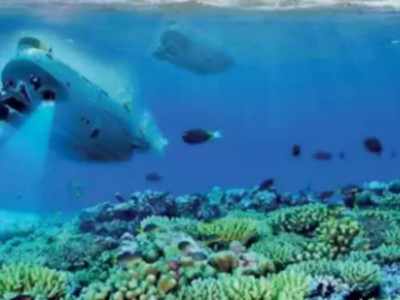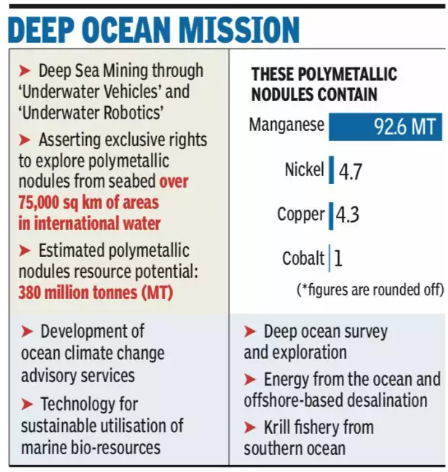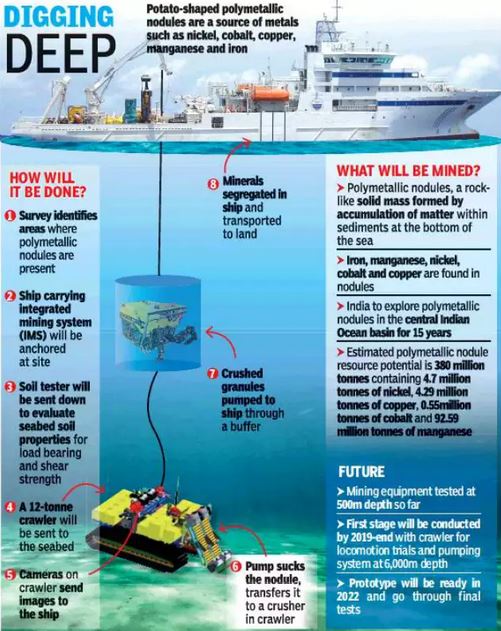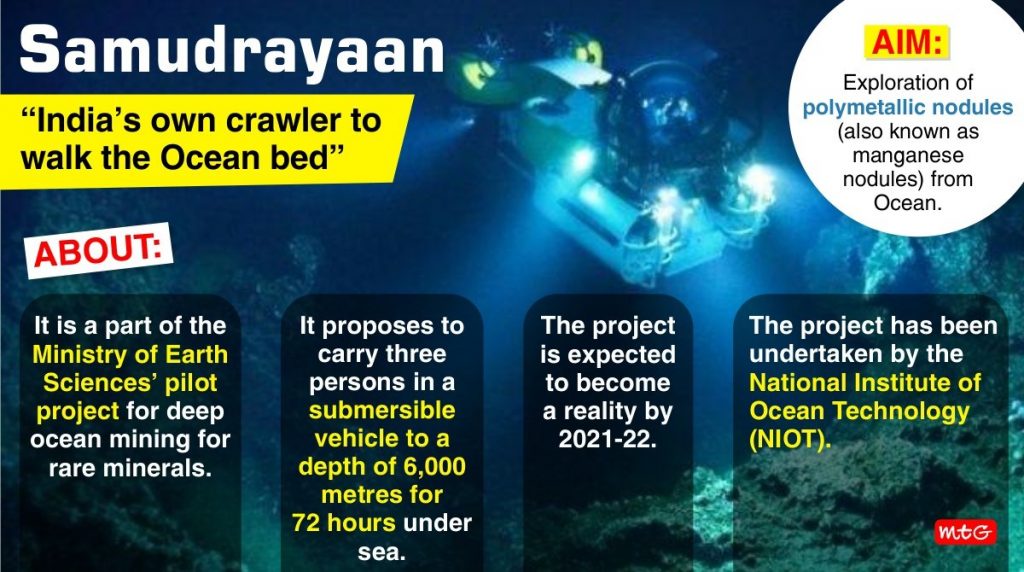Description

Disclaimer: Copyright infringement not intended
Context
- Chief of the Naval Staff, and the Government stakeholders discussed the modalities to deepen cooperation in "Deep Ocean Mission" which is to be the torchbearer of India's "Blue Economy".
About
- Deep Ocean mission is an initiative to undertake the deep ocean exploration focused on India's exclusive economic zones and continental shelf.
- It is under Ministry of Earth Sciences (MoES).
Objective
- It aims to search for deep-sea resources and minerals, flora and fauna, including microbes, and studying ways to sustainably utilise them.
Deep Ocean Mission includes:
- Developing systems for deepsea mining, launching a manned submersible.
- Deep-ocean exploration, including purchase of a vessel for this.
- Deep-ocean biodiversity studies, bio prospecting.
- Establishing a research facility in Goa for marine biology and engineering.
- Undertaking climate change surveys of seas around India.
- Making ocean thermal energy conservation efficacious.
- Generates power from the difference in temperatures .
Components
There are six components to the programme.
(1) Development of Technologies for Deep Sea Mining, and Manned Submersible:
- A manned submersible will be developed to carry three people to a depth of 6000 metres in the ocean with suite of scientific sensors and tools for mining Polymetallic Nodules.
(2) Development of Ocean Climate Change Advisory Services:
- It entails developing a suite of observations and models to understand and provide future projections of important climate variables on seasonal to decadal time scales.
(3) Technological innovations for exploration and conservation of deep-sea biodiversity
- Bio-prospecting of deep-sea flora and fauna including microbes and studies on sustainable utilization of deep-sea bio-resources will be the main focus.
- This component will support the Blue Economy priority area of Marine Fisheries and allied services.
(4) Deep Ocean Survey and Exploration
- To explore and identify potential sources of hydrothermal minerals that are sources of precious metals formed from the earth’s crust along the Indian Ocean mid-oceanic ridges.
(5) Energy and freshwater from the Ocean
- Involves studying and preparing detailed engineering design for offshore Ocean Thermal Energy Conversion (OTEC) powered desalination plants.
(6) Advanced Marine Station for Ocean Biology
- Aimed at development of human capacity and enterprise in ocean biology and engineering.
Importance
- India’s Exclusive Economic Zone spreads over 2.2 million square kilometers.
- India has been allotted a site of 75,000 square kilometres in the Central Indian Ocean Basin (CIOB) by the UN International Sea Bed Authority for exploitation of polymetallic nodules (PMN).
- These are rocks scattered on the seabed containing iron, manganese, nickel and cobalt.
- 380 million metric tonnes of polymetallic nodules are available at the bottom of the seas in the Central Indian Ocean.
- A fraction of that reserve can meet the energy requirement of India for the next 100 years.


Samudrayaan Project under the Deep Ocean Mission

https://www.pib.gov.in/PressReleasePage.aspx?PRID=1791489


















